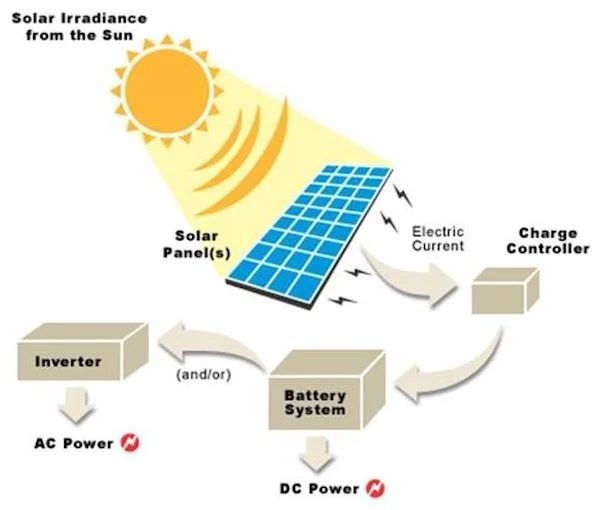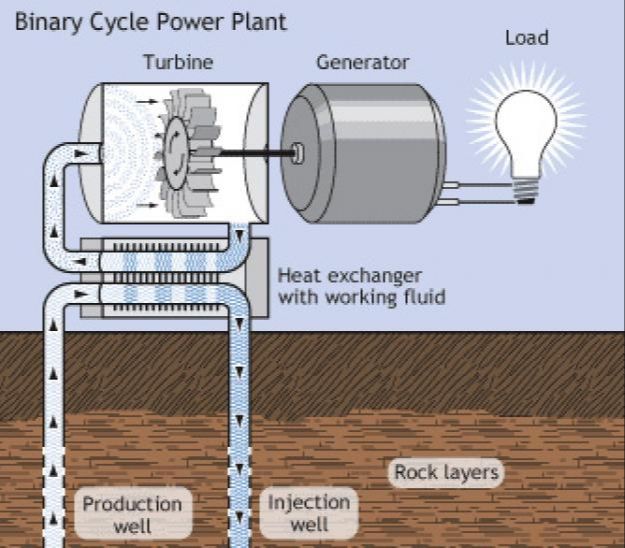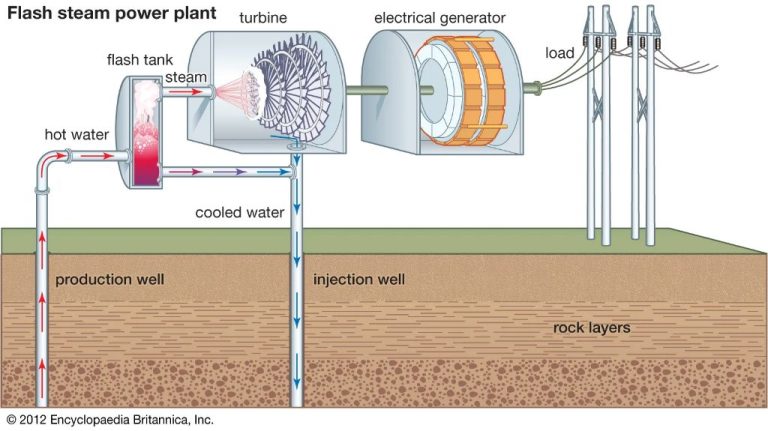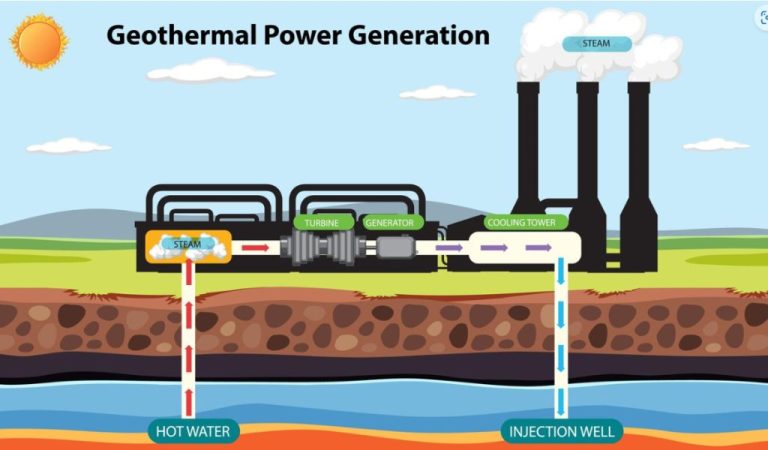What Is An Example Of A Source Of Light Energy?
Light energy is electromagnetic radiation within a specific wavelength range that is visible to the human eye. It enables us to see the world around us. In this article, we will discuss one of the most important sources of light energy – the Sun.
The Sun as a Source of Light Energy
The sun is by far the most significant and important source of light energy on Earth. As a star at the center of our solar system, the sun provides the light and heat that sustains nearly all life on our planet. The sun radiates an enormous amount of electromagnetic energy, most of which reaches Earth in the form of visible light, infrared radiation, and ultraviolet rays.
The light that flows from the sun originates from thermonuclear fusion reactions deep within its core. This process converts hydrogen atoms into helium, releasing photons in the form of solar radiation. This light radiates outward through the different layers of the sun and streams across the emptiness of space to warm planets like Earth. The sun bathes our world in plentiful sunlight, a fundamental energy source that powers photosynthesis in plants, makes life thrive, and influences our weather and climate.
Of the total solar radiation that heads in Earth’s direction, our atmosphere filters out harmful high-energy ultraviolet rays while allowing visible light and other wavelengths to penetrate through. Photosynthetic organisms like plants, algae and some bacteria absorb solar photons and utilize light energy to synthesize organic compounds from carbon dioxide and water. The sun truly provides the original source of energy that sustains almost all life forms on Earth.
The Nature of Sunlight
Sunlight consists of a continuous spectrum of light ranging from ultraviolet to infrared wavelengths. The visible part of sunlight that humans perceive as white light is actually made up of all the colors of the rainbow. When sunlight passes through a prism, the different wavelengths separate into the visible color spectrum from violet (shorter wavelengths) to red (longer wavelengths).
The peak wavelength distribution of sunlight is in the green part of the visible spectrum at around 500 nanometers. However, sunlight also contains ultraviolet radiation from 100-400 nm and infrared radiation from 700 nm to over 1 millimeter wavelength. Ultraviolet light has higher energy and frequencies than visible light while infrared has lower energy and frequencies.
The intensity of sunlight reaching the Earth’s surface varies by time of day, location, weather conditions, and atmospheric composition. At sea level on a clear day, sunlight provides an irradiance of just over 1 kilowatt per square meter. This number, known as the solar constant, gives the average power density of sunlight outside the Earth’s atmosphere. Atmospheric scattering and absorption reduce sunlight intensity at the surface.
The spectral composition, intensity, angle, and duration of sunlight all play important roles in phenomena on Earth ranging from plant photosynthesis to solar panel efficiency. Understanding the nature and properties of sunlight is key to harnessing its potential as a renewable energy source.
Radiation from the Sun
The light and heat energy we receive from the Sun on Earth is the result of radiation from nuclear fusion reactions occurring inside the Sun. At extremely high temperatures and pressures in the Sun’s core, hydrogen nuclei are fused into helium, releasing enormous amounts of energy in the process. This energy is released in the form of photons, particles of light with no mass or charge. These photons radiate outward from the core through the rest of the Sun’s mass and eventually stream outward into space in all directions at the speed of light.
The stream of photons leaving the Sun’s surface is known as solar radiation or sunlight. The journey of a photon from the core of the Sun to the surface can take hundreds of thousands of years due to the dense plasma of the solar interior. Once free of the Sun, sunlight takes about 8 minutes to travel the 93 million miles to reach Earth. The sunlight that arrives at Earth consists mostly of visible light photons, along with ultraviolet photons and some infrared. This radiation provides almost all the energy driving Earth’s climate and life.
Uses of Solar Energy
Solar energy has many practical uses in our modern world. The most well-known application is solar power, which converts sunlight into electricity using photovoltaic cells. Photovoltaic panels on rooftops or solar farms can generate renewable electricity. Solar thermal collectors can also harness energy from the sun to heat water for residential, commercial and industrial uses.
In addition, solar energy is used in a variety of other ways:
- Solar ovens use sunlight for cooking.
- Solar water disinfection uses ultraviolet radiation to purify drinking water.
- Solar drying is used to dry crops, fruits, vegetables, fish and other items.
- Concentrated solar power systems use lenses or mirrors and tracking systems to focus sunlight into a small beam. The concentrated heat is transferred to a fluid and used to spin a turbine to generate power.
- Passive solar building design takes advantage of sunlight to provide lighting and heating to structures.
- Photovoltaic cells provide power to satellites in space.
- Solar cells are used in calculators and other small devices.
Solar energy offers a renewable, sustainable way to help meet the world’s energy needs. Converting sunlight into usable energy will only become more critical as fossil fuel resources decline. With advanced technologies and infrastructure improvements, solar power has the potential to play a major role in the global energy mix of the future.
Effects of Sunlight on Earth
Sunlight has a profound impact on life here on Earth. Plants and other photosynthetic organisms rely on sunlight to convert carbon dioxide and water into energy and oxygen through photosynthesis. This process is vital to almost all lifeforms which depend on plants directly or indirectly for food. Beyond food production, sunlight also powers the planet’s water cycle. As sunlight heats water on the Earth’s surface, it evaporates into water vapor which eventually condenses into clouds and precipitates back down as rain, allowing for rivers, lakes, and oceans. Sunlight also heats the atmosphere and drives wind patterns that circulate air and weather across the globe.
On a planetary scale, sunlight reaching the Earth provides the energy that powers the climate system. The amount and distribution of incoming solar radiation determines climate zones and temperature variations between the equator and poles. Temperate climates, critical for human civilization to thrive, depend on consistent levels of sunlight. Variations in solar intensity over thousands of years shift the Earth’s climate from warm periods with little glaciation to ice ages when glaciers expand. On a daily basis, the cycle of day and night regulates Earth’s temperature, preventing extreme swings between hot days and freezing nights.
Overall, life as we know it relies on the stable energy output from the Sun to power biological and chemical processes and maintain a habitable climate. Changes to the amount of sunlight reaching Earth can have cascading effects on ecosystems and human societies. Understanding our dependence on this free solar energy source is key to protecting long-term health of our planet’s environment.
Measuring Sunlight
There are several ways to precisely measure sunlight reaching the Earth’s surface. The most direct method is to use instruments called pyranometers or solar irradiance meters. These devices measure solar irradiance, which is the rate of solar energy hitting a surface per unit area. It is expressed in watts per square meter (W/m2).
Pyranometers contain thermopile sensors that generate a small voltage proportional to the intensity of incoming sunlight. They can measure total solar irradiance across all wavelengths or irradiance within specific wavelength bands. High quality pyranometers are calibrated to be accurate to within 1-2% and have fast response times.
Another device used is a pyrheliometer, which measures direct beam solar radiation coming from the sun’s disk only, excluding diffuse sky radiation. A solar tracker mounted pyrheliometer can follow the sun’s path across the sky for continuous beam irradiance data.
Networks of ground measurement stations around the world have pyranometers to collect solar radiation data. This is useful for solar energy applications as well as climate research. Satellites also have radiometers to measure global solar irradiance from space.
Storing Solar Energy
The energy from the sun can be harnessed and stored for later use through various technologies. This allows the power from the sun to be used even when the sun is not actively shining.

One of the most common methods is through solar cells, also known as photovoltaic cells. These devices convert sunlight directly into electricity. The electricity can then be used to charge batteries, which store energy chemically to be used when needed. Solar panels made up of many solar cells are used on rooftops, solar farms, satellites, and more to generate and store solar electricity.
Solar thermal power plants use mirrors to concentrate sunlight to heat some kind of fluid like water or synthetic oil. This hot fluid is then used to create steam to spin a turbine and generate electricity. Some of the thermal energy can also be stored for use after sundown.
Molten salt storage is one technique used to store thermal energy from the sun. Molten salt retains heat very well, so it can be heated by concentrated sunlight during the day. Then it can be stored and used to create steam to generate electricity as needed, even at night.
Additionally, solar heat can be stored in water tanks for domestic water and space heating needs. Solar energy can also be used to break down water molecules into hydrogen and oxygen via electrolysis. The hydrogen can then be stored and used as a clean fuel for many applications.
Research continues into new ways to store solar energy efficiently and cheaply. Advances in batteries, molten salts, hydrogen storage, and other technologies will further increase our ability to capture and harness the sun’s energy whenever we need it.
Future of Solar Power
Solar power is continuously advancing with new innovations and improvements that enhance efficiency and expand applications. Several trends that will shape the future of solar energy include:
Improved solar cell technology – Companies are developing more efficient solar cells that can convert a greater percentage of sunlight into electricity. Some key innovations include multi-junction cells to absorb more of the solar spectrum, thin-film cells with novel semiconductor materials, and cells with builtin sunlight concentrating lenses.
Expanded grid-scale capacity – Utility-scale solar farms will expand as costs continue to fall. The solar share of total electricity generation is projected to grow significantly in the coming decades. New solar farms can also provide storage through batteries.
Storage solutions – Better batteries and new storage techniques will enable solar power to supply consistent electricity when the sun isn’t shining. Some storage options include lithium-ion batteries, flow batteries, hydrogen fuel cells, compressed air, and thermal storage.
Improved manufacturing – Automation, robotics, and other innovations will drive down solar module production costs. Manufacturing techniques like thin-film roll-to-roll processes have the potential for big cost reductions.
Floating solar arrays – Situating solar panels on bodies of water could expand available land area in crowded regions. Floating solar farms can produce clean electricity without taking up usable ground space.
Solar in transportation – Electric vehicles charged by solar power will become more prevalent. Some vehicles may even integrate solar cells onto their surfaces. Solar energy can help power public transportation systems.
Expanded applications – Solar will increasingly be integrated into building materials, consumer devices, agriculture, desalination, space technologies, and more. More applications will unlock solar’s diverse capabilities.
With continued technological improvements, solar power is poised to become one of the main pillars of the global energy supply this century.
Conclusion
The Sun is the primary source of light energy on Earth. Sunlight consists of electromagnetic radiation from the Sun, mainly infrared, visible light, and ultraviolet light. This radiation provides crucial energy that sustains life and drives Earth’s climate and weather.
The amount of solar energy reaching a given area varies based on latitude, time of day, season, local landscape and climate. Solar irradiance measures this radiant power and is used to quantify sunlight. Tracking sunlight helps us understand Earth’s energy budget and make use of solar power.
The Sun has always shone on Earth but harnessing its energy is key for humanity’s future. Solar technologies like photovoltaic panels and concentrated solar power allow us to convert sunlight into useful electricity. As solar power capacity expands worldwide, the Sun’s consistent energy can help reduce reliance on fossil fuels and build a more sustainable world.
Does this look good? Let me know if you would like me to modify or expand the conclusion section.







